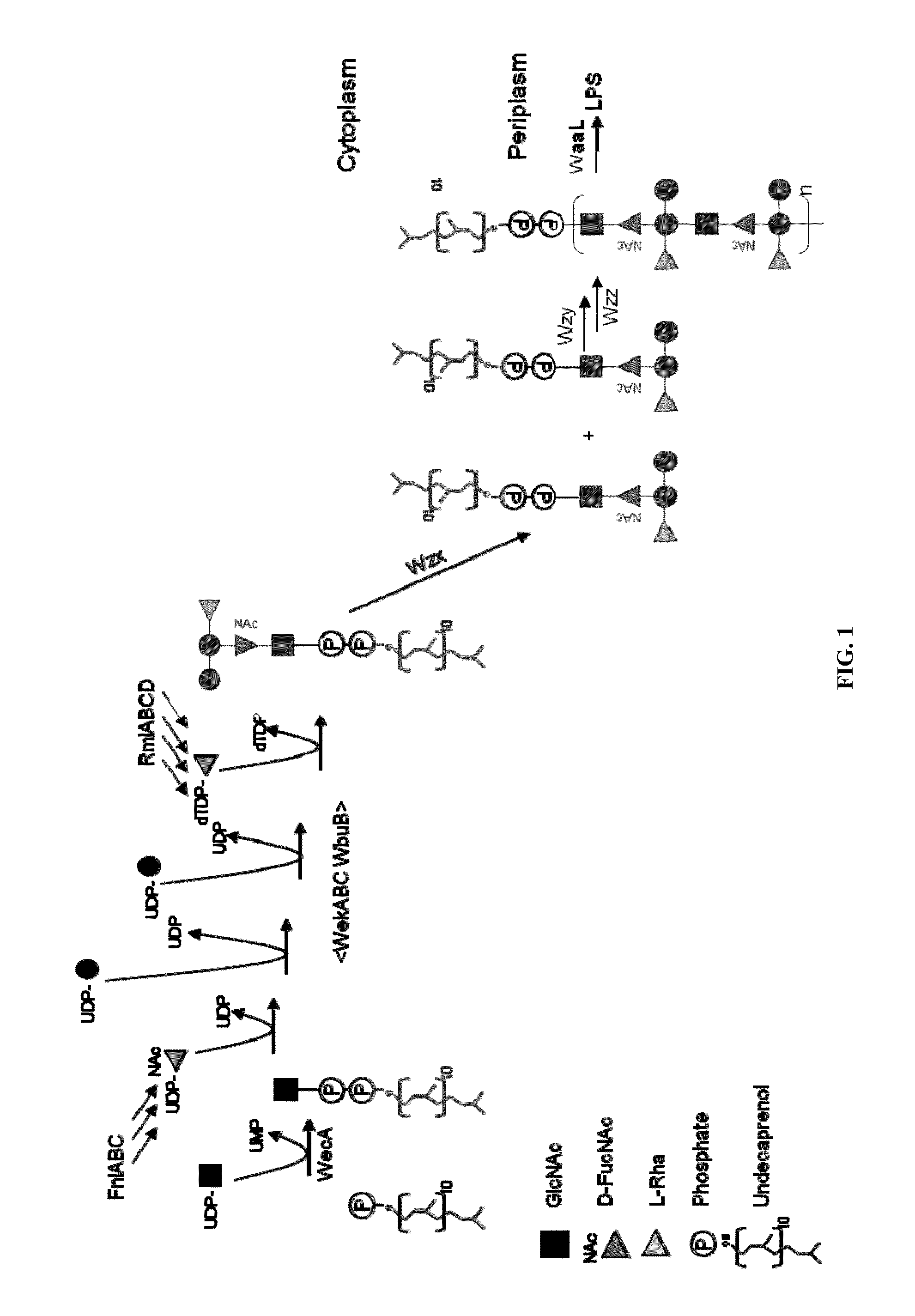Novel polysaccharide and uses thereof
a polysaccharide and polysaccharide technology, applied in the field of new polysaccharides, can solve the problems of meningitis and sepsis, reduce or ameliorate the severity of expec infection, prevent the progression of expec infection, and reduce the duration of expec infection
- Summary
- Abstract
- Description
- Claims
- Application Information
AI Technical Summary
Benefits of technology
Problems solved by technology
Method used
Image
Examples
example 1
[0352]To determine the serotype distribution of urinary tract infection (UTI)-causing E. coli, an epidemiology study was performed. Over 1800 E. coli isolates form human urine samples were collected from subjects in Switzerland and the O antigen serotypes (OPS) from each sample was analyzed using classical agglutination techniques. See FIG. 4
[0353]Isolated human urine samples were analyzed to determine the identity of pathogens therein and their antibiotic resistance patterns. E. coli isolates were obtained from the samples following the analysis. E. coli isolates were identified by classical microbiological exclusion and inclusion strategies involving growth on chrome (CPS3) and MacConkey agar. E. coli isolates further were analyzed using an agglutination assay to determine their O antigen serotype. See DebRoy et al. (2011) Animal health research reviews / Conference of Research Workers in Animal Diseases 12, 169-185. Isolates from the same O antigen serogroups were furth...
example 2
E. coli 025
[0358]In recent years, increased occurrence of O25-positive strains has been observed (see George and Manges (2010) Epidemiol Infect 138, 1679-1690) and is evidenced by the study described in Example 1, where the O25 serotype was found to be one of the top four E. coli serotypes in terms of prevalence.
[0359]O25A
[0360]An O antigen repeat unit structure of the E. coli O25 serotype has been published previously (see Kenne et al., 1983, Carbohydrate Research 122, 249-256; and Fundin et al., 2003, Magnetic Resonance in Chemistry 41, 4) and is presented in FIG. 2B. An rfb cluster related to the O25 O antigen from E. coli strain E47a is publicly available (GenBank GU014554), and is presented in FIG. 2A. E. coli E47a is used as a reference strain for O25 serotyping. Further rfb cluster sequence information is available from the genome sequence of a strain causing asymptomatic bacteriuria, E. coli 83972. (see Zdziarski et al., 2010, PLoS Pathog 6, e1001078). Although phenotypic O2...
example 3
E. coli O1
[0400]Structural databases list different subserotype structures for E. coli O1. In particular, O1A, O1A1, O1B, O1C. O1A and O1A1 are structurally identical and believed to be associated with disease, although O1B and C have not been reported to be pathogenic (see Gupta, et al., (1992) J Bacteriol 174, 7963-7970), and represent a minority among O1 isolates. Structures of O1A / O1A1, O1B, and O1C are shown in FIG. 12B. To analyze the O1 subserotype distribution in the UPEC epidemiology study of Example 1, the O antigen structures of several clinical isolates from the study were analyzed in detail. First, LPS structure of 12 strains determined to be positive for O1 by agglutination assay were analyzed by SDS PAGE. See FIG. 13: O1 silver staining and Western blot.
[0401]Silver staining showed typical LPS signals in all lanes containing extracts from the O1 clinical isolates. Strong staining at an electrophoretic mobility of about 10-15 kDa depicts the lipid A core, and ladder li...
PUM
 Login to View More
Login to View More Abstract
Description
Claims
Application Information
 Login to View More
Login to View More - R&D
- Intellectual Property
- Life Sciences
- Materials
- Tech Scout
- Unparalleled Data Quality
- Higher Quality Content
- 60% Fewer Hallucinations
Browse by: Latest US Patents, China's latest patents, Technical Efficacy Thesaurus, Application Domain, Technology Topic, Popular Technical Reports.
© 2025 PatSnap. All rights reserved.Legal|Privacy policy|Modern Slavery Act Transparency Statement|Sitemap|About US| Contact US: help@patsnap.com



